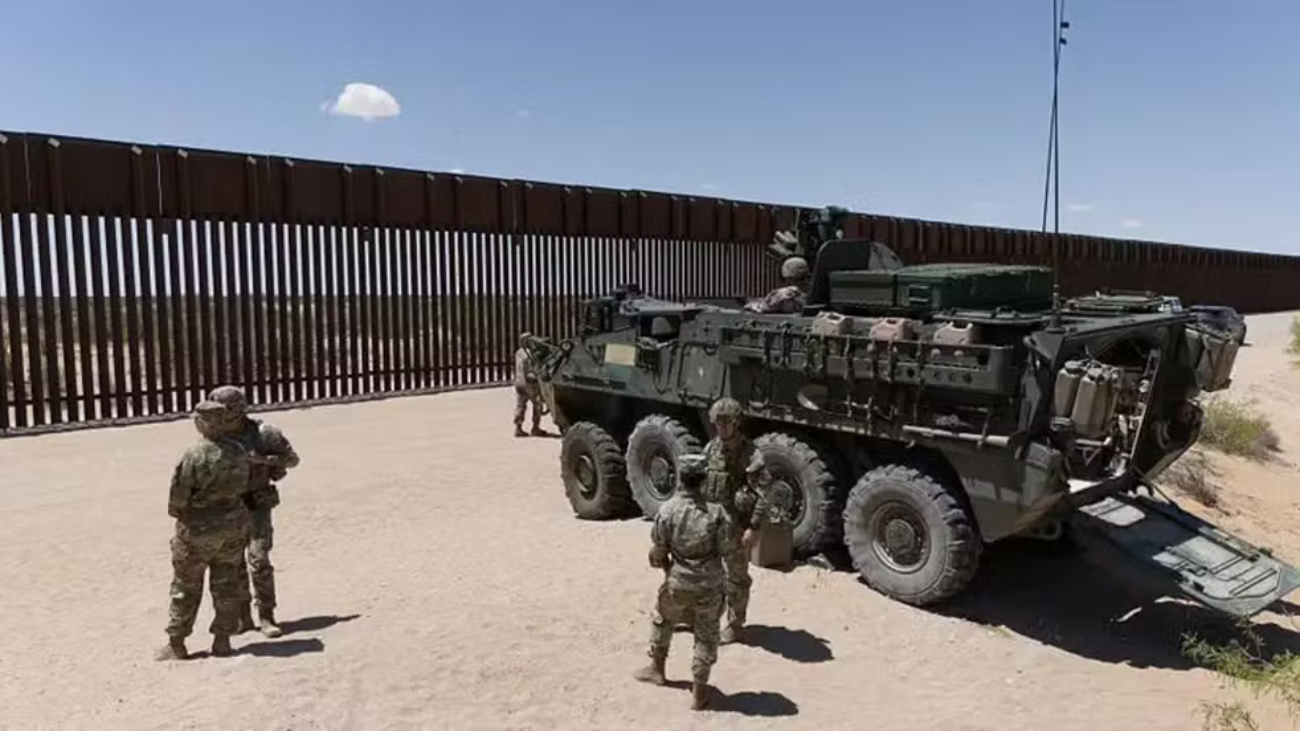Military Buildup at the Border Despite Declining Crossings
High atop Cristo Rey Mountain in El Paso, Texas, the rugged terrain makes it impossible for the towering steel border wall to reach its peak. From this vantage point, a young lookout—known as a “hawk” by Border Patrol agents—scans the landscape, determining the safest routes for migrants attempting to cross into the US.
Yet, despite the US government’s portrayal of an “invasion” and “crisis,” the numbers tell a different story. In the El Paso sector—one of the busiest along the 3,000-kilometer border—daily apprehensions have plummeted from 2,500 to just 67. Nationwide, April saw only 8,000 illegal crossings, down from 128,000 the previous year.
Despite these historic lows, the border is undergoing an unprecedented militarization under President Donald Trump’s administration.
Armored Vehicles and National Defense Zones
Just miles from Cristo Rey Mountain, a Stryker armored vehicle—a military asset used in Iraq and Afghanistan—stands guard near the border wall. This is part of a newly established National Defense Area (NDA), one of two zones created in April and May under Trump’s emergency declaration.
Nearly 1,700 warning signs in English and Spanish now mark these areas, cautioning that trespassers may be detained by US troops until Border Patrol arrives. While soldiers are barred from making arrests under the Posse Comitatus Act, the Trump administration has found a legal workaround—classifying these zones as military installations to justify detention.
Currently, over 8,000 troops are stationed along the border, supported by Strykers, drones, surveillance aircraft, and even Navy ships patrolling coastal areas.
A Legal Gray Zone
Trump’s April 11 executive order transferred federal borderlands from the Interior Department to the Pentagon, effectively converting them into extensions of nearby military bases.
-
New Mexico’s NDA (273 km) is now part of Fort Huachuca (Arizona).
-
Texas’ NDA (85 km) falls under Fort Bliss, one of the nation’s largest military installations.
White House Press Secretary Karoline Leavitt defended the move, stating it enhances the military’s ability to “detect, intercept, and process illegal immigrants, criminal groups, and potential terrorists.”
Brigadier General Jeremy Winters, deputy commander of the Joint Task Force-South, emphasized the military’s role in intelligence gathering, boasting a 95% interception rate. However, critics argue the administration is exploiting a legal loophole—the “military purpose doctrine”—to bypass restrictions on domestic military policing.
Controversy and Contradictions
Elizabeth Goitein of the Brennan Center for Justice warns that the administration is “effectively turning a third of the southern border into a military installation” to justify detentions. Had Trump invoked the 1807 Insurrection Act—which he previously considered during 2020’s racial justice protests—the backlash would have been far greater.
Yet, with illegal crossings at record lows, experts question the necessity of such heavy militarization. As Goitein notes, “The numbers don’t justify the emergency rhetoric.”
As troops and armored vehicles remain deployed, the debate continues: Is this a necessary security measure—or political theater at the border?


Leave A Comment